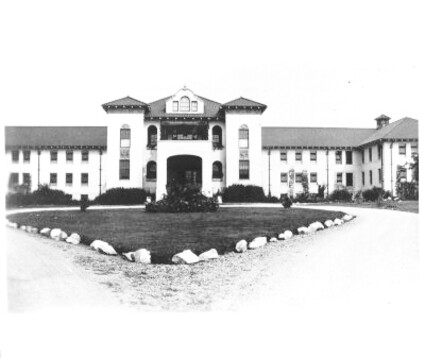Northern State Hospital history program on July 29
July 12, 2023

Photo courtesy of Port of Skagit
EARLY YEARS OF NORTHERN STATE HOSPITAL – When it opened in 1909, Northern State Hospital was a nearly self-sufficient community, with a farm that patients worked.
At times shrouded in mystery after its closure in the early 1970s, Northern State Hospital and its unique history will be revisited during a July 29 public program at the former mental health facility's campus four miles northeast of Sedro-Woolley.
The daylong event (10 a.m.-4 p.m.) invites those attending to share memories, scan photos, take self-guided tours and listen to stories and reminiscences of former employes and family members of Northern State.
The program, billed as a "public history day," is a collaborative project between the Skagit County Historical Museum in La Conner, The Port of Skagit and the Sedro-Woolley Museum.
"There will be a whole slate of speakers," historical museum Director Jo Wolfe said of the event during a meeting of Skagit County Pioneer Association officers last Friday.
Wolfe said she anticipates representatives of the Seattle Times, which has conducted extensive research for a documentary on Northern State, to participate.
The expansive Northern State grounds, sporting Spanish Revival buildings and dotted with English walnut trees, became a virtual ghost town following the decision in 1973 by Washington state officials to close the hospital's doors after six decades of operation.
Ultimately, though, a partnership between the City of Sedro-Woolley, Skagit County and The Port of Skagit led to creation of the SWIFT (Sedro-Woolley Innovation for Tomorrow) Center at Northern State. The Port acquired the property in 2018.
In addition, the hospital's farm, where patients once worked as a component of their occupational therapy, is now part of the Northern State Recreation Area, featuring an extensive trail system highlighted by open pastures and forested lanes that offer views of structures that were part of the hospital's physical plant.
Commissioned in 1909, Northern State was once part of a four-legged stool – along with logging, farming and Skagit Steel – supporting the Sedro-Woolley economy.
At its closure, the hospital employed 400 and served around 260 patients. Half of those patients were transferred to Western State Hospital. The remaining 130 were discharged over time.
Tom Read of the Seattle Post-Intelligencer wrote extensively about Northern State in the spring of 1973 as activity wound down at the hospital.

"In its hey-day when society's answer to the mentally ill was to stick them as far out of sight as possible," Read wrote, "there was a patient population of 2,700 at Northern. The beautiful campus snuggled against the Cascade foothills had its own farm and provided much of its own food.
"Two things changed all that," reported Read, then the P-I's chief medical and science writer. "Society found a conscience and realized the mentally ill have rights, especially rights to treatment, not just custody. And several medical breakthroughs in the '50s introduced drugs that can support a disturbed person and help lead him back into society."
The definition of mental impairment also evolved. At one time a person could be committed for epilepsy, alcoholism or even menopausal distress.
The hospital provided patients with a range of vocational training on its farm, dairy and in its workshops. The facility site – a virtual town unto itself – included patient and staff housing, a water reservoir, sewage system, lumber mill, quarry, steam plant, greenhouse, canning facilities, gymnasium, library, laundry, dining room and bakery, according to the Washington Trail Association.
Northern State Hospital was developed in response to overcrowding at the state's other mental health facilities. Sedro-Woolley officials, seeking to diversify the community's economy, successfully bid to have a new regional hospital in the northern part of the state located nearby.
Campus designers included the Olmstead Brothers, whose father had planned New York City's famed Central Park. The main building was designed by Seattle architects Saunders and Lawton.
Nearly 30 of the Spanish colonial revivalist style structures and much of the former hospital's landscape have since been listed on the National Register of Historic Places.






Reader Comments(0)